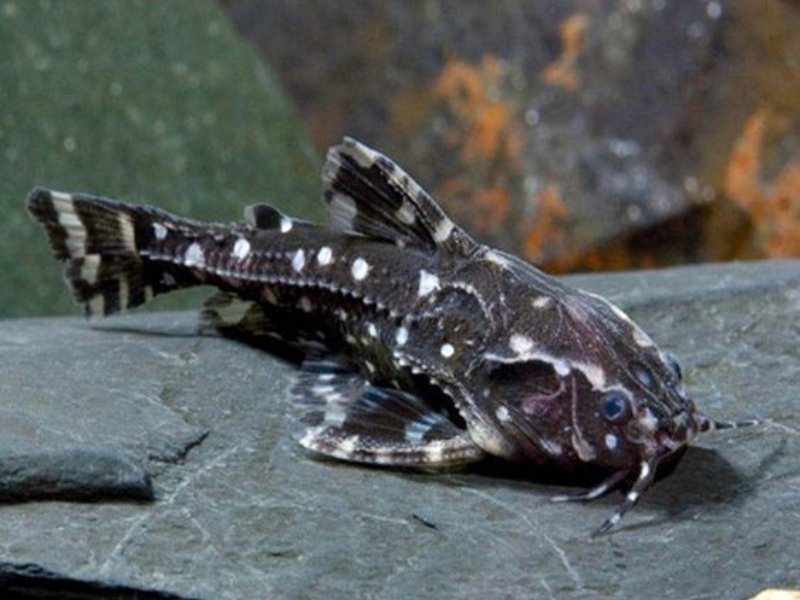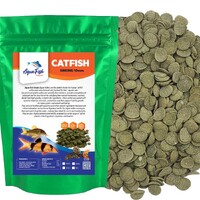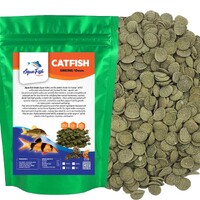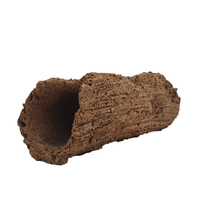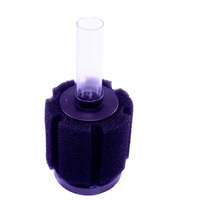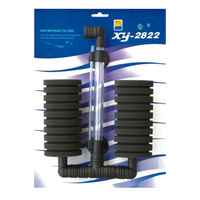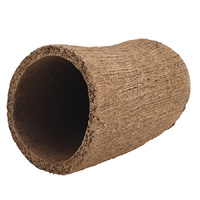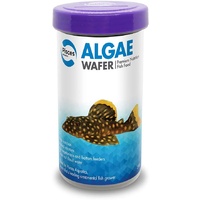Spotted Raphael Catfish (talking catfish) 12-15cm - Agamyxis Pectinifrons
ARRIVE ALIVE GUARANTEED!
Product Code: LF-SpottedRAPH-CAT15cm
Dispatch In 1-2 Business Days
Spotted RAPHAEL CATFISH - 12-15CM
Hey there, fellow aquarists and fish enthusiasts! Today, we're diving deep into the fascinating world of Agamyxis Pectinifrons, also known as the Spotted Talking Catfish.
So, picture this: You're on your Aquarium Journey, whether you're a seasoned pro or just starting out in the hobby. We're here to join you on that adventure and introduce you to this captivating underwater personality.
Origins and Unique Features
First things first, let's talk about where these lively characters come from. Agamyxis Pectinifrons hail from the freshwater rivers and streams of South America, particularly the Amazon basin. They're part of the catfish family, which means they have those trademark whiskers, or barbels, on their faces.
Now, the spotlight feature of these fish is their unique ability to produce a series of clicking sounds by grinding their pectoral fins together. Hence the nickname, "Talking Catfish." This is not just an auditory treat for us, but it's thought to be a form of communication among these intriguing creatures.
Tank Mates and Compatibility
Wondering who they'd get along swimmingly with? Well, these catfish are generally peaceful and can make excellent tank mates for a variety of other community fish, provided they share similar water parameter preferences. Consider companions like tetras, rasboras, and peaceful cichlids. Avoid keeping them with aggressive or overly territorial species.
Diet and Feeding Practices
Now, let's talk food! Agamyxis pectinifrons are omnivorous, which means they enjoy a balanced diet. Offer them a mix of high-quality pellets, live or frozen foods like bloodworms, brine shrimp, and even some blanched vegetables. Variety is the key to a happy, healthy Talking Catfish.
Feeding should be done during their most active times, which are usually in the evening or early morning. Remember to remove any uneaten food to maintain water quality.
Breeding Habits
If you're looking to take your hobby to the next level and try breeding these chatty fellows, it's a bit of a challenge. They are known to be egg layers that deposit their eggs on flat surfaces. To maximize your chances, provide them with suitable flat surfaces or caves in your tank where they can lay their eggs. However, successfully breeding them in captivity can be a bit tricky and may require some patience and dedication.
In conclusion, Agamyxis pectinifrons, the Spotted Talking Catfish, can add a unique and intriguing dimension to your aquarium. Whether you're a newbie or an expert in the hobby, their South American origins, chatty nature, and compatibility with a variety of tank mates make them a wonderful addition to your underwater world.
Remember, creating a thriving aquatic environment is a journey, and we're here to share it with you every step of the way. Happy fish keeping!
- 1 x Spotted Rapheal Catfish 15cm
DOA Policy for Live Fish shipping
At Aquaholics, we place utmost importance on the careful shipping of live fish to ensure their safe arrival. Our commitment to quality includes taking various measures during transit. Each fish bag is infused with medical-grade oxygen and an ammonia-neutralizing solution. In colder periods, we also utilize heat packs to maintain optimal temperatures. However, we understand that unforeseen circumstances can sometimes lead to unfortunate outcomes. To provide you with peace of mind, we have implemented a Dead-on Arrival (DOA) policy that ensures you are covered in such situations.
Procedure:
- Owner's Presence: It is essential for the owner or an authorised representative to be available at the provided shipping address to receive the fish. If no one is available, the courier will leave your parcel in a safe space as all fish orders are shipped ATL.
- Shipping Address: Please provide a valid street address for shipping. Ensure the address is accurate and complete to avoid any delivery issues.
- Reporting DOA: If you receive a fish that is dead on arrival, please notify us promptly. Within 2 hours of receiving the fish, send an email to our customer support team. Include the following details in your email:
- Name: Your full name
- Order Number: The unique order number associated with your purchase
- DOA Fish Picture: Attach a clear picture of the deceased fish
Terms and Conditions:
- Timely Notification: Please make your DOA claim within 2 hours of receiving the fish. Claims submitted after this timeframe will not be eligible for compensation.
- Proper Documentation: Ensure that your email includes accurate and complete information, including your name, order number, email, and a clear picture of the deceased fish. Incomplete or inaccurate information may delay the processing of your claim.
- Verification: Our customer support team will review the provided information to verify the DOA claim. Once the claim is validated, we will proceed with the appropriate compensation.
- Compensation Options: In the event of a DOA, we offer two compensation options: a) Store Credit: You will receive a store credit equal to the value of the deceased fish, which can be used for future purchases. b) Refund: We can issue a refund for the value of the deceased fish, processed through the original payment method used for the purchase.
- Shipping Costs: Please note that shipping costs are non-refundable unless the entire order is considered a DOA.
- Conditions Apply: Our DOA policy covers only fish that are dead upon arrival. It does not apply to fish that perish after successful delivery and acclimation to their new environment.
We are committed to providing the best possible experience for our customers and ensuring the well-being of our live fish. If you have any questions or concerns regarding our DOA policy, don't hesitate to get in touch with our customer support team at [email protected] , and we will be glad to assist you.
 Note: The terms and conditions outlined in this DOA policy are subject to change without prior notice. We recommend reviewing the most up-to-date policy on our website or contacting our customer support team for any updates.
Note: The terms and conditions outlined in this DOA policy are subject to change without prior notice. We recommend reviewing the most up-to-date policy on our website or contacting our customer support team for any updates.
Thank you again for allowing us on your aqaurium journey.
Jesse Elstak
Owner
-
Spotted Appearance: As their name suggests, these catfish have a distinctive spotted pattern on their bodies. The spots vary in size and are scattered across their olive-green to brownish-gray base color, giving them a visually appealing appearance.
-
Barbels: Like many catfish species, Agamyxis pectinifrons have long, sensitive barbels around their mouths. These barbels help them locate food in the substrate and navigate their surroundings.
-
Clicking Sounds: One of their most intriguing features is their ability to produce clicking sounds by grinding their pectoral fins together. These clicks are believed to be a form of communication among individuals.
-
Size: These catfish typically grow to a moderate size, reaching around 4 to 5 inches (10 to 13 centimeters) in length when fully mature.
-
Peaceful Nature: Agamyxis pectinifrons are known for their peaceful temperament, making them suitable for community aquariums with other non-aggressive fish species.
-
Omnivorous Diet: They are omnivorous and will accept a wide variety of foods, including pellets, live or frozen foods like bloodworms and brine shrimp, and even some plant matter.
-
Nocturnal Behavior: These catfish are primarily active during the night or early morning, so it's common to observe their interesting behaviors during these times.
-
Breeding Challenges: While they do breed in captivity, successfully breeding them can be a bit challenging and may require specific conditions and patience.
-
South American Origins: Agamyxis pectinifrons are native to South America, particularly the Amazon basin, and they appreciate aquarium conditions that mimic their natural habitat.
-
Compatibility: They are generally compatible with a variety of peaceful tank mates, including tetras, rasboras, and some cichlids, as long as water parameters are similar.
- Original Name: Agamyxis pectinifrons
- Common Name: Spotted Talking Catfish
Specifications:
- Species: Agamyxis pectinifrons
- Origin: South America, particularly the Amazon basin
- Diet: Omnivorous - They eat a variety of foods including pellets, live or frozen foods like bloodworms and brine shrimp, and some plant matter.
- pH Range: 6.0 - 7.5
- Temperature: 24°C - 28°C (75°F - 82°F)
These water parameters and specifications are essential to ensure the health and well-being of your Spotted Talking Catfish in a home aquarium setting. Keeping the water conditions within these ranges will help replicate their natural habitat and support their overall health and vitality.
| SKU | LF-SpottedRAPH-CAT15cm |
| Brand | Live Fish |
| Shipping Weight | 0.1000kg |
| Shipping Width | 0.100m |
| Shipping Height | 0.100m |
| Shipping Length | 0.100m |

